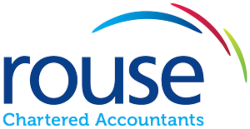However, there are ways that you can minimise the impact that the latter can have on your buy-to-let investment.
Here we look at what is changing, and steps that you can take so that you are not left out of pocket.
What is changing?
From 1 April 2017, a restriction will come into place on claiming higher rate tax relief on mortgage interest payments on residential property.
This change means that tax relief on ‘finance costs’ such as interest on loans to buy furnishings and mortgage interest will be restricted to the basic rate of tax.
This will be phased in over the next four years, so its full impact will be delayed, but will eventually (and significantly) change the profitability of mortgage/debt funded buy-to-let portfolios.
How will this impact me?
Up until now, those buying to let have been able to claim tax relief on their mortgage interest payments at their marginal rate of tax. So a basic rate taxpayer would get 20% relief, higher rate 40% relief and top-rate 45% relief.
From April there will be just a flat 20% relief. So basic rate taxpayers will not be affected, but those above will. Whilst those holding rental property without mortgages will not be impacted.
An example
 Now
Now
You are a higher-rate taxpayer earning £18,000 per year rental income and your mortgage interest costs £10,000 per year. Tax is due on the profit (£8,000), so you pay £3,200 to HMRC and keep £4,800 as profit.
2020 (when the phased in tax relief reduction is fully in place)
40% tax will be due on your full rental income (£18,000) which will be £7,200. From this you can claim a 20% tax relief on the mortgage interest (20% of £10,000) which is £2,000. This means you will need to pay £5,200 to HMRC and keep £2,800 as profit. Therefore, your tax bill has increased by 62.5%.
Ultimately, the higher the interest you pay, the more you will be impacted. Therefore, if you have a long-term fixed rate (usually offered at a higher rate) you may find your profits are in danger of being wiped out.
How to reduce the impact of these tightening tax rules?
The simple answer would be to increase rents to cover your lost rental income, however this may be difficult in practice when factoring in the local rental market rates or goodwill with your tenants. There are four other ways that could limit your exposure to the changes:
1. A company structure
You could place your property portfolio in a limited company structure, since buy-to-let property held in companies are not affected. You would then pay corporation tax rather than income tax on your profits, which is lower. However, there are pro’s and con’s to consider and in particular the potential tax consequences of incorporating the business into a company. Therefore, we would always advise that you seek professional advice from us before making a decision.
2. Review your mortgage
Speak to a mortgage advisor to see if you can get a better deal. Perhaps a shorter-term fixed rate product will offer lower rates of interest, however, you should discuss the risks, particularly should the base rate of interest increase in the near future. We can recommend a mortgage advisor who deals with buy-to-let mortgages.
3. Claiming relief on repairs and maintenance
Review whether you are utilising your reliefs on the repairs that you are carrying out. Good record keeping and speaking to an experienced buy-to-let tax advisor can help you identify exactly what can and can’t be claimed.
4. Transferring ownership
If your spouse pays a lower rate of tax, you could transfer ownership of your property to them. However, this should be reviewed to ensure it does not lift them into a higher tax band.
Contact our buy-to-let accountants
We advise buy-to-let investors on a daily basis and provide a range of tax advice and ongoing compliance services. Contact us to arrange a free, no obligation quotation with our buy-to-let specialists.

Oscar heads our tax department and provides advice on tax structuring, planning and compliance services to entrepreneurs and their businesses.


